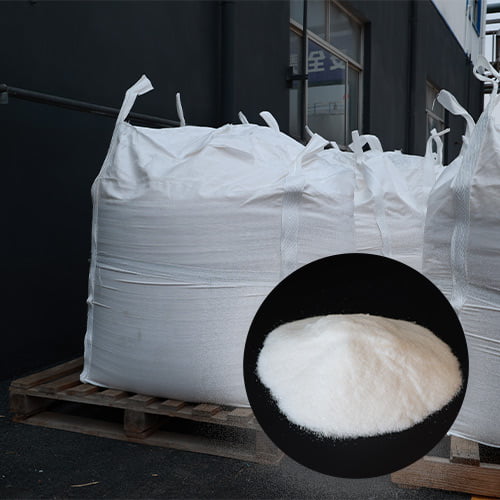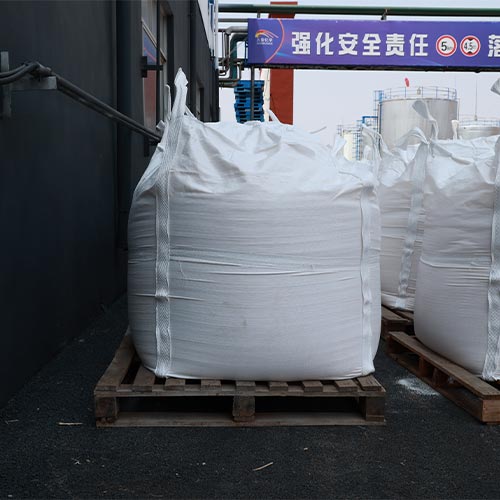مقدمة
In 2024, the global focus on sustainability has intensified, driving industries to seek eco-friendly alternatives. Anhydrous sodium formate emerges as a promising solution, offering versatile applications across various environmental challenges. This blog explores the utilization of anhydrous sodium formate in environmental solutions, its benefits, and potential impacts in the year 2024 and beyond.
Understanding Anhydrous Sodium Formate

Anhydrous sodium formate is a crystalline compound resulting from the combination of sodium hydroxide and formic acid. Its chemical composition comprises sodium ions (Na+) and formate ions (HCOO-), forming a white, crystalline solid. This compound boasts distinctive properties that render it highly advantageous in a myriad of environmental applications.
In terms of properties, anhydrous sodium formate exhibits notable solubility in water, alcohol, and glycerol, making it versatile for various formulations. Its hygroscopic nature allows it to absorb moisture from the surroundings, which is particularly useful in applications requiring desiccation or humidity control. Additionally, it has a relatively high melting point, enhancing its stability under elevated temperatures.
The production processes of anhydrous sodium formate typically involve the neutralization reaction between sodium hydroxide and formic acid. This reaction yields sodium formate along with water as a byproduct. Further purification steps may be employed to obtain the anhydrous form, ensuring minimal moisture content and maximum stability.
Anhydrous Sodium Formate in Waste Treatment
Anhydrous sodium formate plays a crucial role in waste treatment processes, particularly in wastewater treatment plants, where its unique properties are harnessed to enhance efficiency and minimize environmental impact.
One significant application lies in its ability to facilitate the breakdown of organic matter present in wastewater. Anhydrous sodium formate acts as a source of readily available carbon for microorganisms, promoting their growth and metabolic activity. This accelerates the biodegradation of organic pollutants, leading to more efficient removal of contaminants from the wastewater.
Moreover, anhydrous sodium formate serves as a potent reducing agent, which aids in the neutralization of harmful substances present in wastewater. It can effectively reduce the concentration of toxic heavy metals, such as chromium, lead, and mercury, by forming insoluble precipitates or complexing with these metals, rendering them less harmful to the environment.
In wastewater treatment processes, anhydrous sodium formate is often utilized as a supplementary carbon source alongside other organic compounds to optimize microbial activity and promote the degradation of pollutants. Its ability to adjust pH levels also contributes to maintaining favorable conditions for biological treatment processes.
Deicing Solutions with Anhydrous Sodium Formate
As the winter season approaches, the need for reliable deicing agents becomes paramount. Anhydrous sodium formate emerges as a sustainable and eco-friendly alternative to traditional chloride-based deicers, gaining traction due to its low environmental toxicity and efficient ice-melting properties. Its myriad benefits position it as a preferred choice for deicing various infrastructures including roads, airports, and other critical transportation networks.
Anhydrous sodium formate offers several advantages over conventional deicers. Firstly, its low environmental toxicity minimizes harm to ecosystems and reduces the risk of corrosion to infrastructure such as bridges and vehicles. This eco-friendly attribute aligns with the growing emphasis on sustainability in winter maintenance practices.
Moreover, anhydrous sodium formate exhibits efficient ice-melting capabilities, effectively breaking down ice and snow even at low temperatures. Its ability to penetrate ice rapidly accelerates the deicing process, ensuring safer road conditions and reduced risks of accidents due to icy surfaces.
The versatility of anhydrous sodium formate extends beyond roadways. It finds applications in airport operations, where the need for swift and effective snow and ice removal is critical for ensuring safe aircraft operations. By offering rapid ice melting while minimizing environmental impact, anhydrous sodium formate enhances operational efficiency and safety in aviation facilities.
Anhydrous Sodium Formate in Soil Stabilization

Soil stabilization plays a vital role in construction projects and environmental restoration efforts, particularly in land reclamation projects where soil integrity is essential for supporting structures and preventing erosion. Anhydrous sodium formate emerges as a key stabilizing agent, offering a range of benefits including improved soil compaction, enhanced erosion resistance, and optimized permeability.
One significant application of anhydrous sodium formate lies in its ability to improve soil compaction. When applied to soil, it aids in binding soil particles together, resulting in increased density and stability. This enhanced compaction reduces the risk of settlement and subsidence, ensuring the longevity and stability of structures built upon the treated soil.
Additionally, anhydrous sodium formate serves as an effective erosion control agent. By strengthening soil structure and promoting cohesion between soil particles, it minimizes the risk of erosion caused by wind or water runoff. This is particularly valuable in environmental restoration projects where protecting soil from erosion is crucial for preserving biodiversity and preventing habitat degradation.
Future Prospects and Challenges
Looking ahead to 2024 and beyond, the adoption of anhydrous sodium formate in environmental solutions is poised for growth. However, challenges such as regulatory hurdles and market competition may impact its widespread adoption. In this section, we analyze the future prospects and potential obstacles facing the utilization of anhydrous sodium formate for environmental sustainability.
| Factors | Analysis |
|---|---|
| Market Demand | The increasing emphasis on environmental sustainability is driving demand for eco-friendly solutions. Anhydrous sodium formate’s potential to replace conventional chemicals in various applications positions it favorably in the market. |
| العقبات التنظيمية | Regulatory approval processes may pose significant challenges for the adoption of anhydrous sodium formate. Strict environmental regulations and the need for extensive testing and certification could delay its widespread use, especially in sensitive ecological areas. |
| Competition | Competition from existing chemical alternatives and emerging technologies could hinder the market penetration of anhydrous sodium formate. Companies offering similar environmentally friendly products may also vie for market share, intensifying competition and potentially limiting growth opportunities. |
| تقدمات تكنولوجية | Continued research and development efforts to enhance the production efficiency and application versatility of anhydrous sodium formate could drive its adoption. Technological advancements leading to cost reduction, improved performance, and expanded use cases may overcome barriers and accelerate market acceptance. |
| Infrastructure Support | Adequate infrastructure for production, distribution, and application of anhydrous sodium formate is essential for its successful implementation. Investments in infrastructure development, logistics, and training will be crucial to support widespread adoption and ensure efficient utilization. |
| Environmental Awareness | Increasing awareness among consumers, businesses, and policymakers about the environmental benefits of anhydrous sodium formate could positively influence its adoption. Education campaigns highlighting its efficacy, safety, and sustainability advantages may help overcome skepticism and foster acceptance in the market. |
استنتاج
In conclusion, anhydrous sodium formate emerges as a versatile and sustainable solution for addressing environmental challenges in 2024. From waste treatment to deicing and soil stabilization, its diverse applications offer promising avenues for mitigating environmental impact while promoting eco-friendly practices. As industries continue to prioritize sustainability, the role of anhydrous sodium formate in environmental solutions is expected to expand, driving innovation and progress in the years to come.
التعليمات
What are the main benefits of using anhydrous sodium formate in environmental solutions?
Anhydrous sodium formate offers benefits such as low environmental toxicity, efficient performance, and versatility in various applications.
Is anhydrous sodium formate safe for use in environmentally sensitive areas?
Yes, anhydrous sodium formate is considered safe for use in environmentally sensitive areas due to its low toxicity and biodegradability.
How does anhydrous sodium formate compare to traditional deicing agents?
Anhydrous sodium formate is more environmentally friendly than traditional chloride-based deicers, as it does not harm vegetation or aquatic ecosystems.
What are the potential challenges in adopting anhydrous sodium formate for environmental solutions?
Challenges may include regulatory compliance, market competition, and cost considerations. However, ongoing research and innovation aim to address these challenges and promote wider adoption of anhydrous sodium formate.



